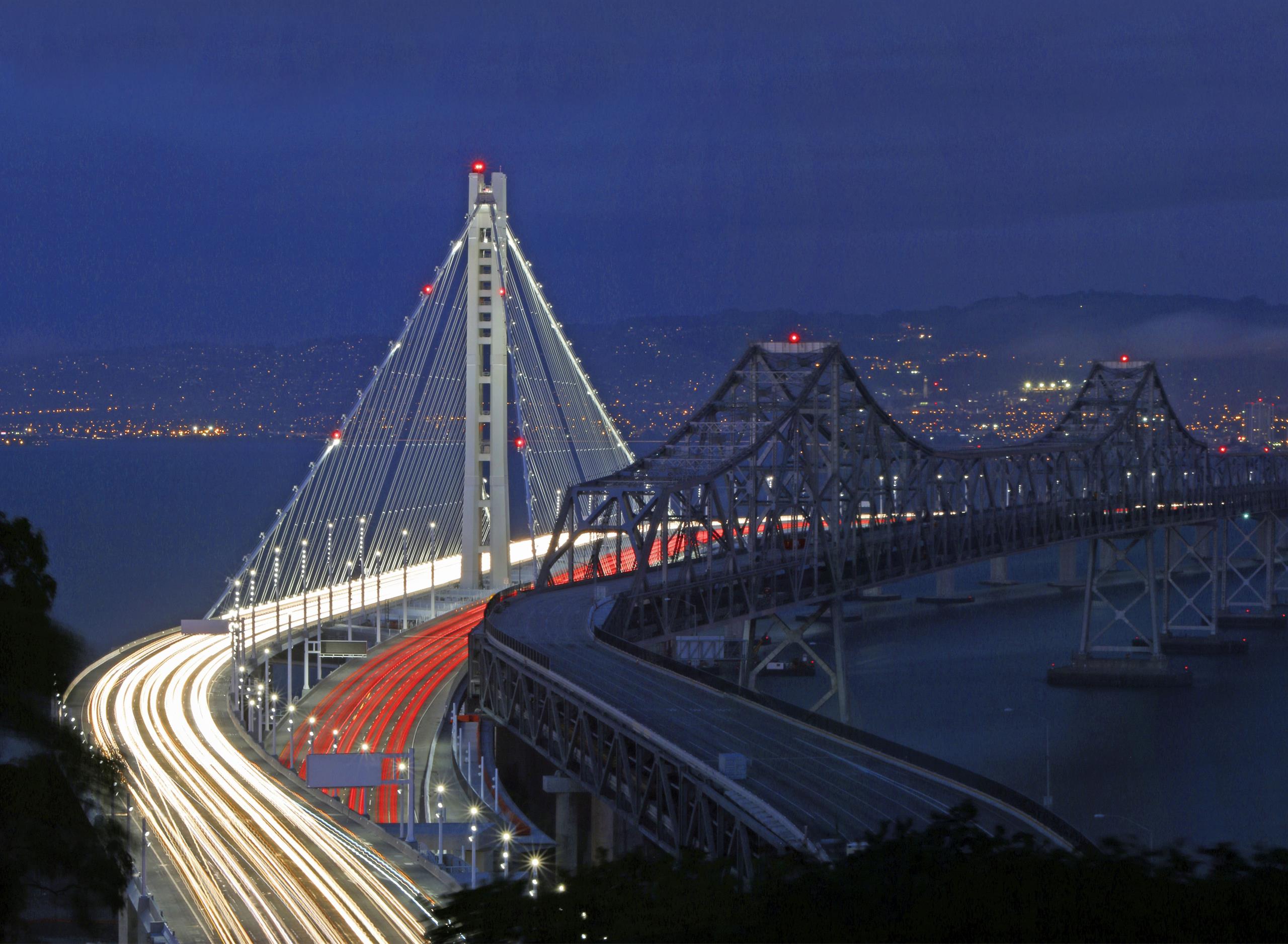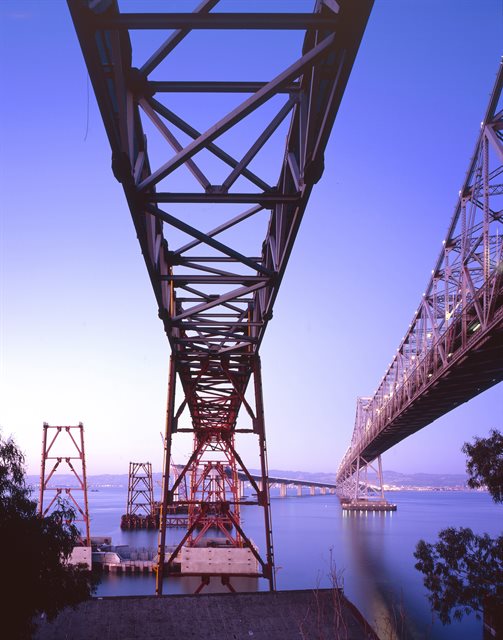Key facts
- Built in the 1930s, the structure crosses from Yerba Buena Island in the middle of the bay to the mainland at Oakland – and in 1989, part of the bridge collapsed.
-
West of the island, the link uses a traditional suspension bridge, which works well in this seismically-active area as it’s structure that is inherently flexible. But on the eastern part of the link, there was nowhere suitable to anchor cables on one side, ruling out a typical suspension bridge.
-
The Bay Area Toll Authority retained Mott MacDonald as part of a joint venture to provide program management services for the construction of the Skyway.
Challenges
The deadline for this project was set by nature. Another earthquake would have rendered the old bridge impassable. Analysis put a price on the loss of connectivity: US$1M per day. That meant that we had to get the new bridge built fast – accelerating the project by 30 days cut financial risk.
With five full width traffic lanes running in each direction and hard shoulders and provision for bicycles and pedestrians, this is the widest self-anchored suspension bridge in the world – so making it seismically safe was a significant challenge.
On a suspension bridge, the deck segments are hung from the cables like ornaments. On this project, because the cables anchor into the bridge itself, the deck had to be in place in order to run the main cable – yet without the main cable, the deck couldn’t be suspended. It was a chicken and egg challenge.
Solution
The absence of a conventional rock anchorage was resolved by designing a 624m self-anchored suspension bridge. Instead of anchoring the main suspension cables to the ground at the end of the bridge, this solution has a single continuous cable that loops around the deck ends, yielding a self-contained structural system that is highly resilient and one that easily straddles the shipping lane with a clear span of 385m.
To resolve the chicken and egg challenge, a temporary supporting bridge was built first to support the deck segments. The 1.6km long main cable which is formed from 137 bundles of steel wires, with each bundle containing 127 strands could then be run around it. The deck is attached to the main cable by 200 suspender cables; as these were tensioned, they effectively jacked the structure off the support bridge and into proper alignment.
The 160m tall tower is made up of four separate columns, bound together with steel bracing components called shear link cross beams. In an earthquake, these beams will contort and flex, absorbing energy and allowing the pillars to move independently without failing. After an earthquake, any affected shear link beams can be simply unbolted and replaced.
To tackle the difficult ground conditions, the tower sits on a foundation including 13 reinforced concrete piles wrapped in steel casings, set into sockets drilled into the bedrock. Each pile is 2.5m in diameter and 60m long.
To introduce energy absorption, the bridge has been designed with seismic joints between deck segments that act like fuses. Called hinge pipe beams, they are cylindrical steel components that run between deck sections, thicker at the ends than they are in the middle. These hinges are sacrificial, distorting to allow deck sections to move. These can be swapped out after they fail, returning the bridge to operation within 72 hours.
Benefit
- Redesigning components to simplify fabrication, and procuring globally, cut capital cost too, contributing to overall budget savings of US$400 million.
- This bridge is particularly innovative; several of its features are completely new.
- We deployed structural and fabrication experts to monitor and advise the manufacturers, ensuring that the components met exacting specifications and were delivered on time.
- Several engineering innovations will allow this transport link to be returned to operation within 72 hours of a severe earthquake and allow it to stand for 150 years.





